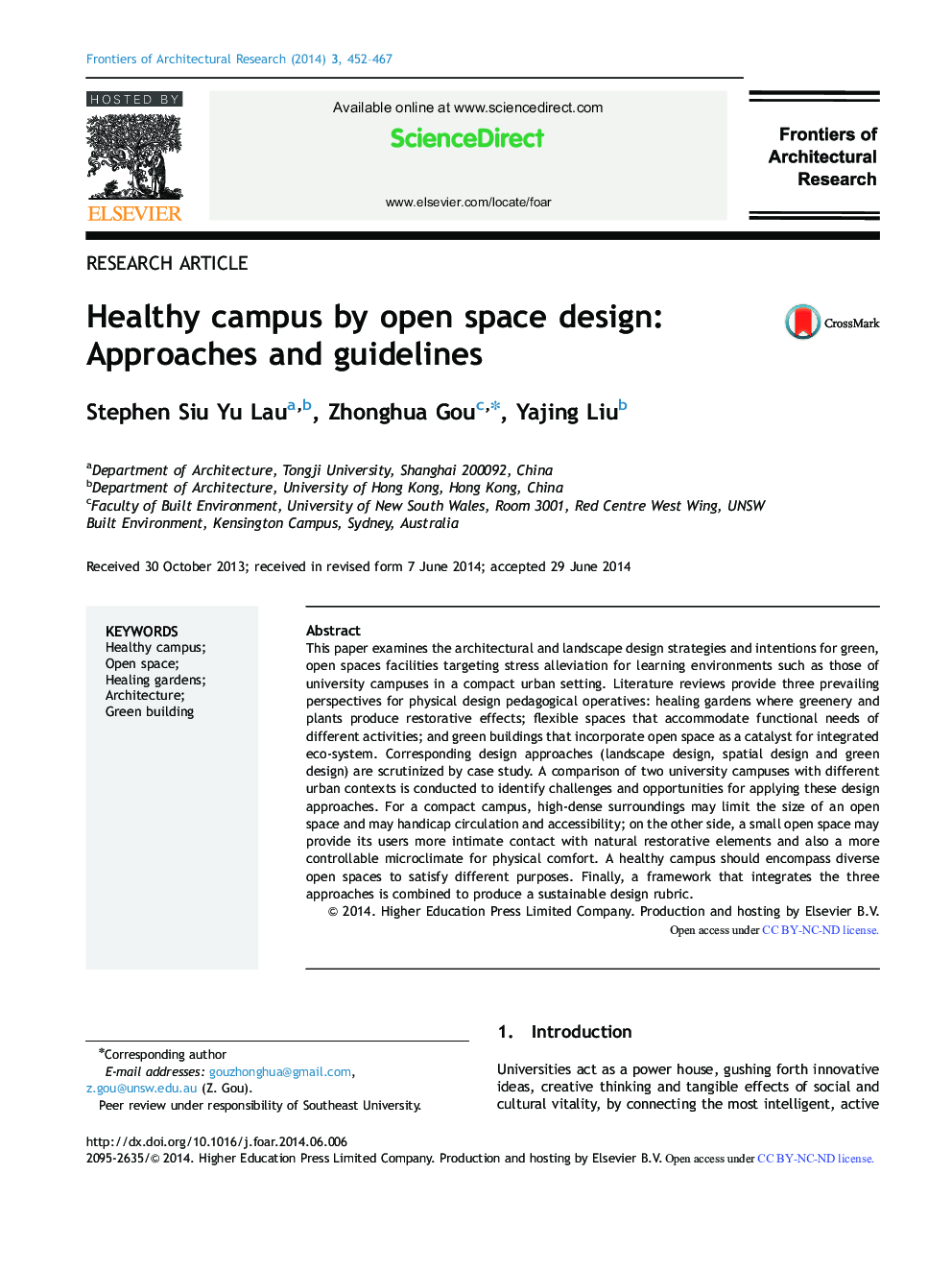| Article ID | Journal | Published Year | Pages | File Type |
|---|---|---|---|---|
| 270705 | Frontiers of Architectural Research | 2014 | 16 Pages |
This paper examines the architectural and landscape design strategies and intentions for green, open spaces facilities targeting stress alleviation for learning environments such as those of university campuses in a compact urban setting. Literature reviews provide three prevailing perspectives for physical design pedagogical operatives: healing gardens where greenery and plants produce restorative effects; flexible spaces that accommodate functional needs of different activities; and green buildings that incorporate open space as a catalyst for integrated eco-system. Corresponding design approaches (landscape design, spatial design and green design) are scrutinized by case study. A comparison of two university campuses with different urban contexts is conducted to identify challenges and opportunities for applying these design approaches. For a compact campus, high-dense surroundings may limit the size of an open space and may handicap circulation and accessibility; on the other side, a small open space may provide its users more intimate contact with natural restorative elements and also a more controllable microclimate for physical comfort. A healthy campus should encompass diverse open spaces to satisfy different purposes. Finally, a framework that integrates the three approaches is combined to produce a sustainable design rubric.
